Hey beautiful gardeners! As someone who loves both style and sustainability, I’ve discovered that taking care of our gardens naturally is just as important as taking care of our beauty routines.
Today, I’m sharing everything I know about neem oil spray – a game-changing natural solution that’s been keeping my plants healthy and gorgeous.
Table of Contents
What Is Neem Oil?
Neem oil is a natural wonder that comes from the seeds of the neem tree. I like to think of it as nature’s own beauty treatment for our plants! This golden-brown oil has a unique smell – some say it’s like garlic mixed with peanuts – but trust me, your plants will love it even if you need to get used to the scent.
What makes neem oil so special is a compound called azadirachtin. This natural ingredient works like a protective shield for your plants, keeping harmful bugs away while being completely safe for you, your family, and the environment.
When and Where to Use Neem Oil
I use neem oil spray in so many situations around my garden! It’s perfect for both indoor houseplants and outdoor garden beds. The best time to apply it is in the evening or early morning when the sun isn’t too strong – this prevents any leaf burning.
You can use it on roses, vegetables, herbs, fruit trees, and even your precious houseplants. I especially love using it on my tomato plants and flower beds where aphids like to party uninvited!
The key is to use it preventively rather than waiting for problems to show up. I spray my plants every two weeks during the growing season as part of my regular garden care routine.
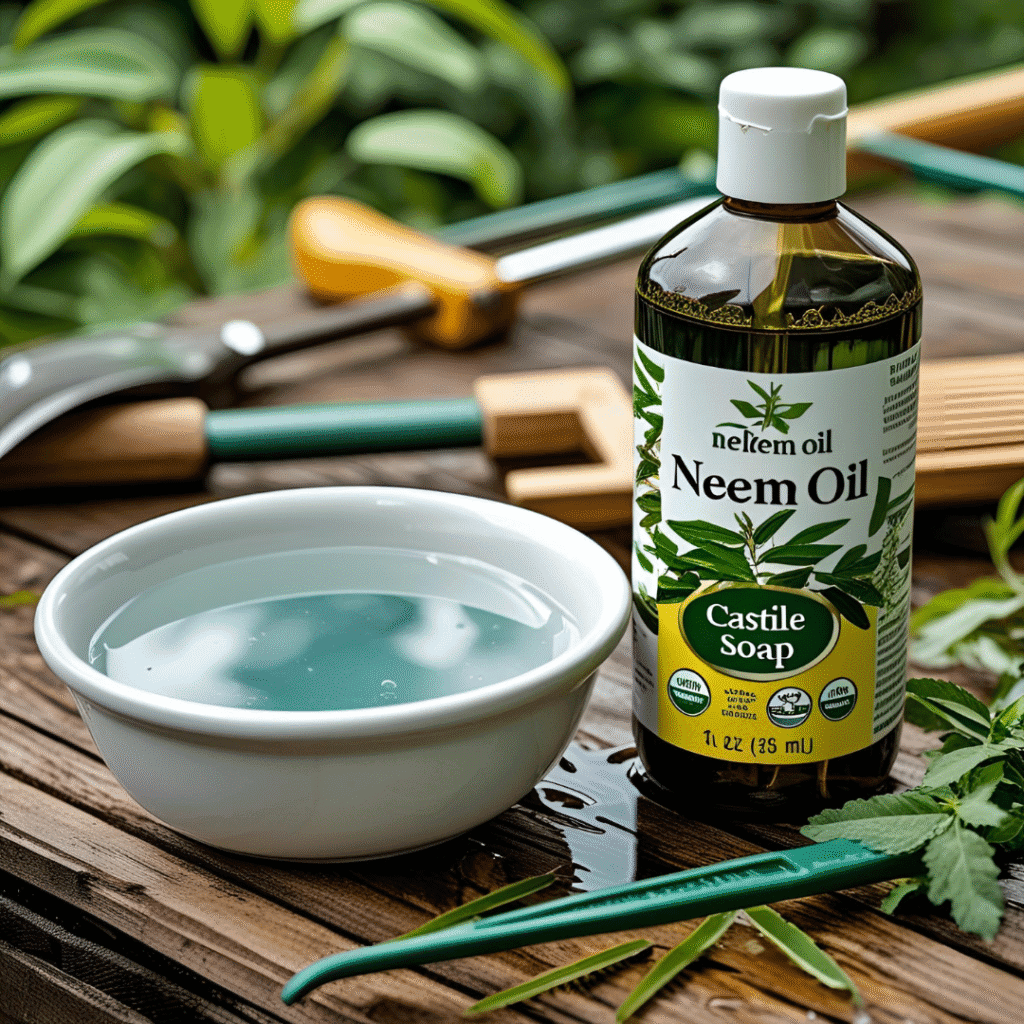
How Does Neem Oil Work?
Here’s where it gets really cool! Neem oil doesn’t just kill pests – it’s much smarter than that. It works in three amazing ways:
First, it disrupts the life cycle of harmful insects. When bugs eat treated plants, they can’t grow or reproduce properly. It’s like nature’s own birth control for garden pests!
Second, it acts as a feeding deterrent. Bugs taste the neem and decide your plants aren’t on their menu anymore. Pretty clever, right?
Third, it suffocates soft-bodied insects like aphids and spider mites by coating them with an oily film. It sounds harsh, but it’s actually much gentler than chemical pesticides.
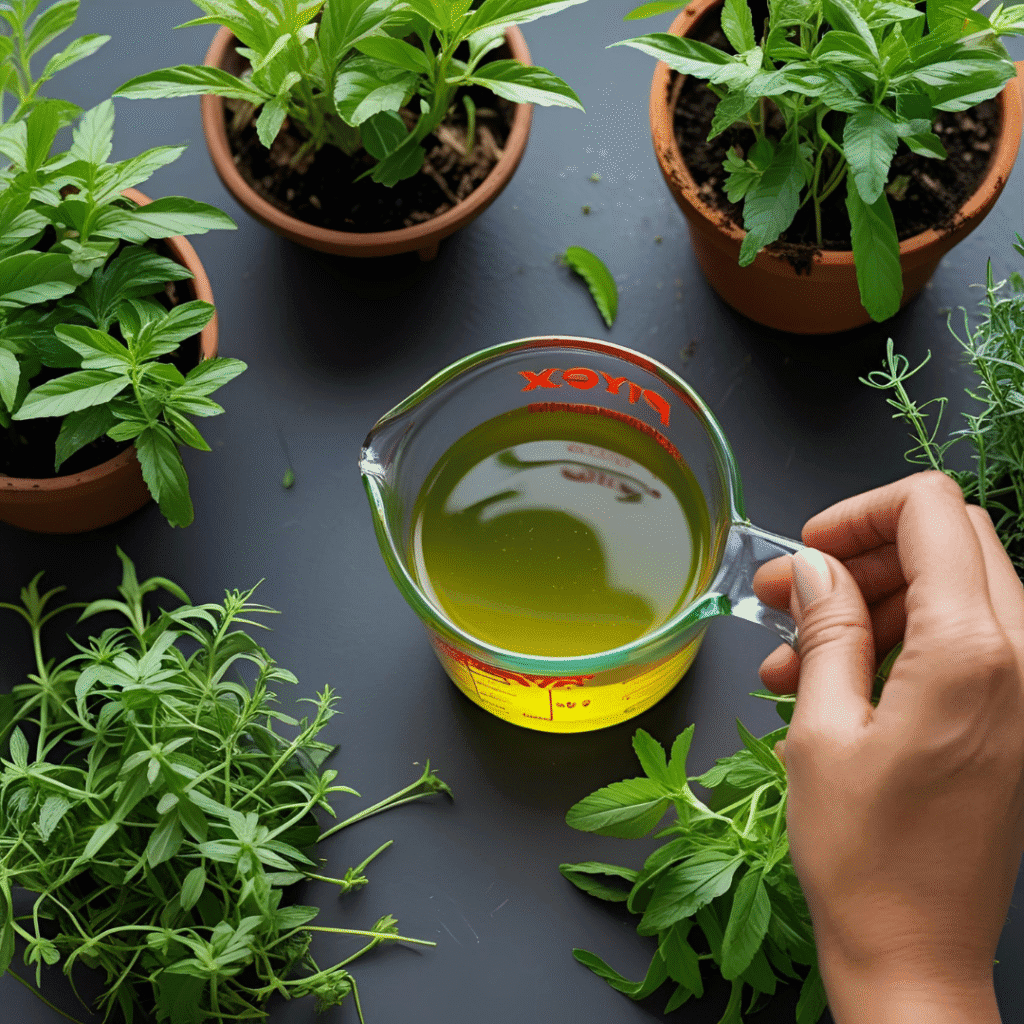
Why Make Homemade Neem Oil Spray?
Making your own DIY neem oil spray is like creating your own skincare products – you know exactly what’s going into it! Store-bought sprays often contain preservatives and other chemicals I’d rather avoid.
Plus, it’s incredibly cost-effective. A small bottle of pure neem oil can make gallons of spray, saving you money that you can spend on new plants instead!
I also love the control it gives me. I can adjust the concentration based on what my plants need, and I can add other beneficial ingredients like mild soap or even essential oils for extra protection.
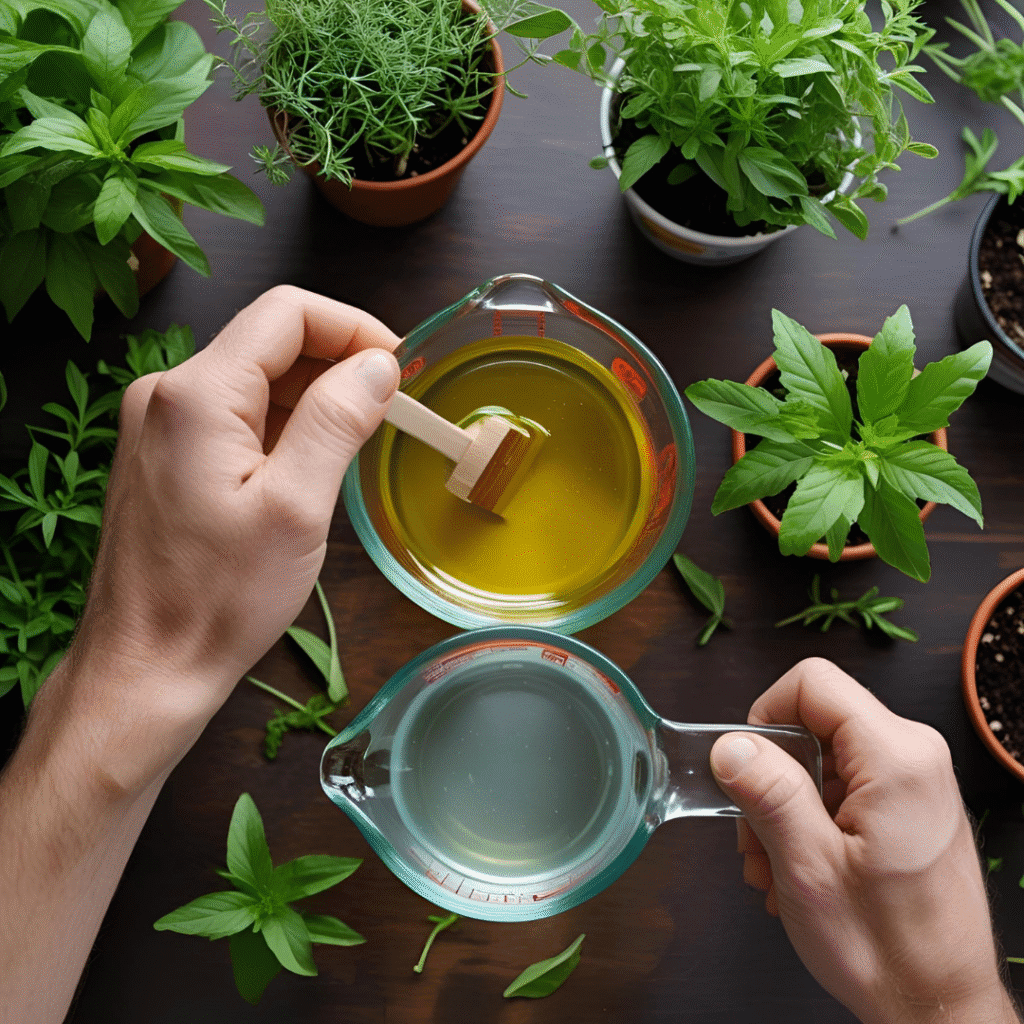
Recipe for Neem Oil Spray
Here’s my go-to homemade neem oil recipe that works beautifully every time:
Basic Neem Oil Spray Recipe:
- 1 teaspoon pure neem oil
- 1/2 teaspoon mild liquid dish soap (I use castile soap)
- 1 quart warm water
Instructions:
- Mix the soap with warm water first – this helps everything blend together
- Slowly add the neem oil while stirring constantly
- Pour into a spray bottle and shake well before each use
- Use within 8 hours for best results
For larger batches, just multiply the recipe. I usually make a gallon at a time for my bigger garden areas.
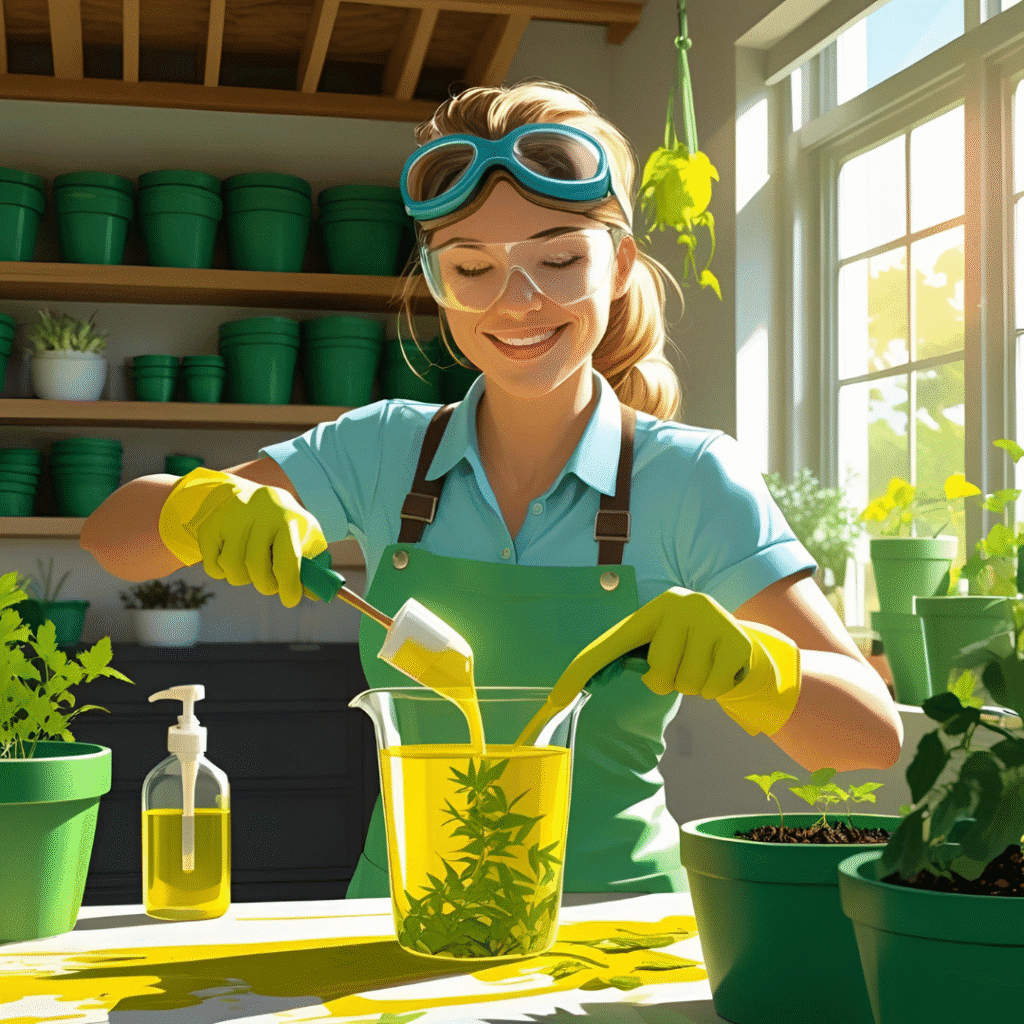
Additional Tips for Using Neem Oil
Always do a patch test first! Spray a small area and wait 24 hours to make sure your plants don’t have any sensitivity. Just like we test skincare products, plants can react differently too.
Storage is important – keep your unused neem oil in a cool, dark place. Heat and light can break down its effectiveness, just like how we store our beauty oils properly.
Never spray during the heat of the day. Early morning or evening applications work best and prevent any potential leaf damage from the sun.
Always shake your spray bottle before using. Oil and water naturally separate, so mixing is essential for even coverage.
How to Apply Neem Oil
Application technique matters! I spray both the tops and undersides of leaves – that’s where many pests like to hide. Use a fine mist setting and cover the plant thoroughly but don’t drench it.
For houseplants, I like to take them outside or to a well-ventilated area for spraying. The smell can be strong indoors, and good airflow helps the treatment work better.
Timing is everything. Apply when you won’t have rain for at least 24 hours, and when temperatures are between 45-85°F for best results.
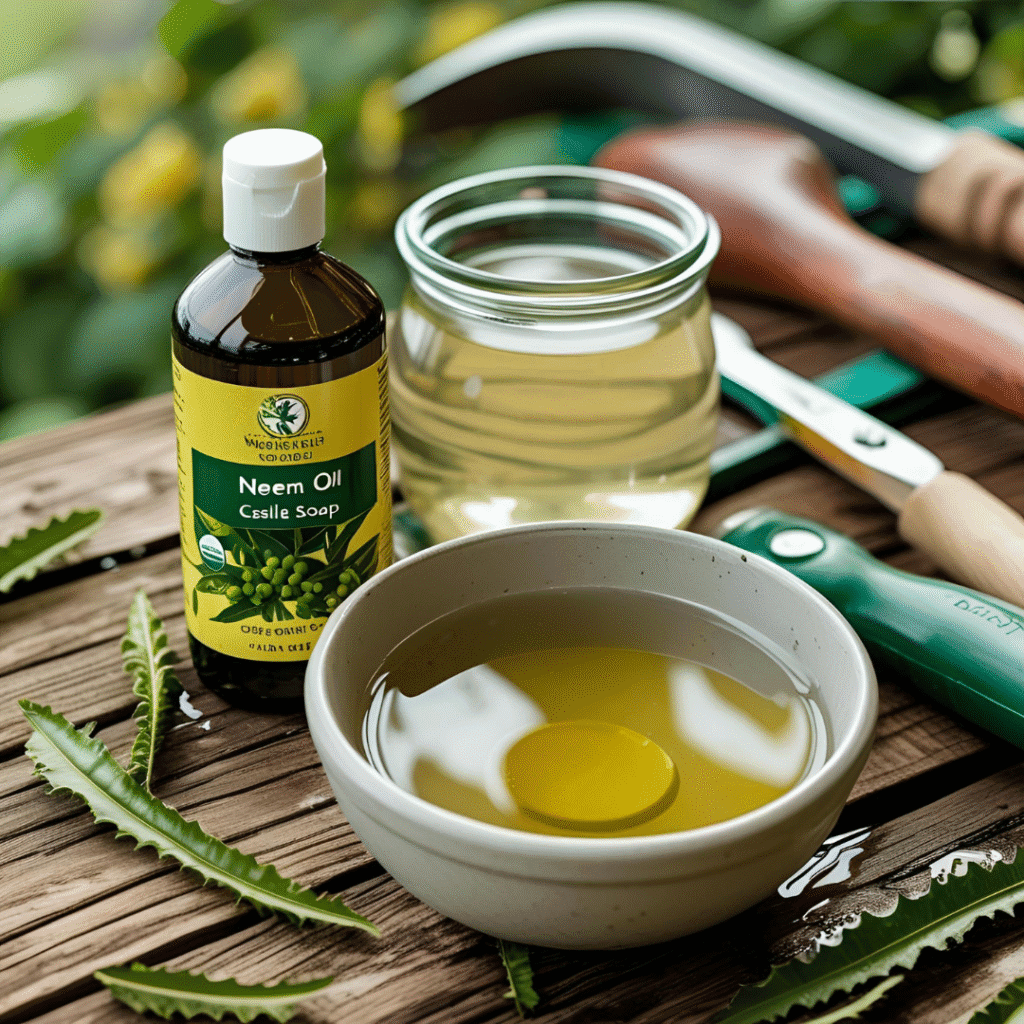
Neem Oil’s Benefits for Your Garden
The benefits of organic neem oil go way beyond pest control! It’s like a multi-vitamin for your plants. Here’s what I’ve noticed in my own garden:
Natural pest control that doesn’t harm beneficial insects like bees and ladybugs when used properly. This makes me feel so much better about my gardening practices!
Fungal disease prevention – I’ve seen fewer issues with powdery mildew and black spot on my roses since I started using neem oil regularly.
Improved plant health overall. My plants seem more resilient and vibrant when I include neem oil in their care routine.
It’s also completely biodegradable, so I don’t worry about environmental impact like I do with chemical treatments.
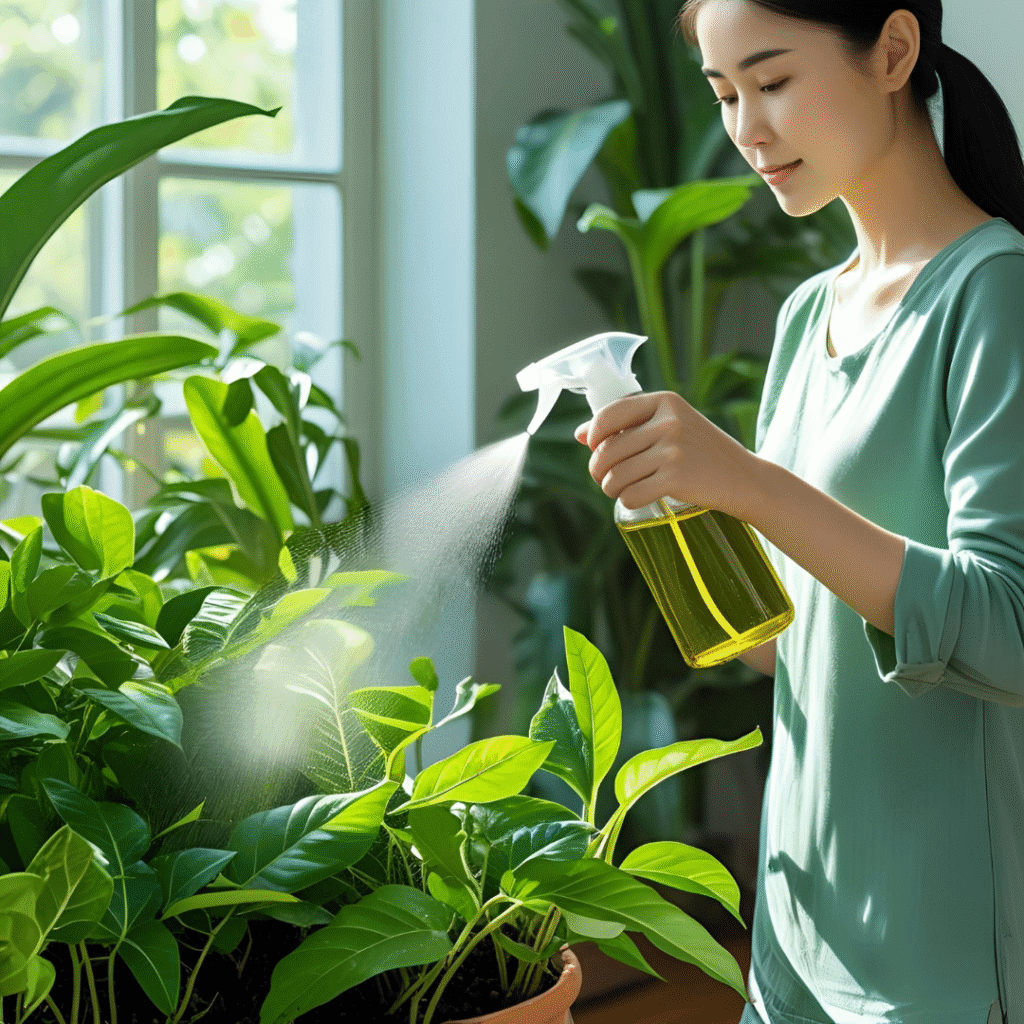
Disadvantages of Using Neem Oil in Your Garden
Let’s be honest – no solution is perfect, and neem oil has some drawbacks I want you to know about.
The smell can be pretty strong and unpleasant. I’ve gotten used to it, but visitors sometimes comment on it! The good news is that it fades as it dries.
It needs frequent reapplication, especially after rain. Unlike synthetic pesticides that last for weeks, neem oil breaks down quickly in sunlight and water.
Neem oil can harm beneficial insects if applied incorrectly. That’s why I always spray in the evening when bees are less active and avoid flowers when possible.
It’s not a quick fix. Results take time to show, which can be frustrating if you’re dealing with a serious pest problem.
Safety and Precautions
Safety first, beautiful gardeners! While neem oil is natural, it still requires careful handling. I always wear gloves when mixing and applying it – it can irritate sensitive skin.
Keep it away from your eyes and mouth during application. If you accidentally get some on your skin, wash it off with soap and water right away.
Store neem oil products away from children and pets. While it’s much safer than chemical pesticides, it’s still not meant for consumption.
Don’t spray during windy conditions – you don’t want it drifting onto other plants or into your face!
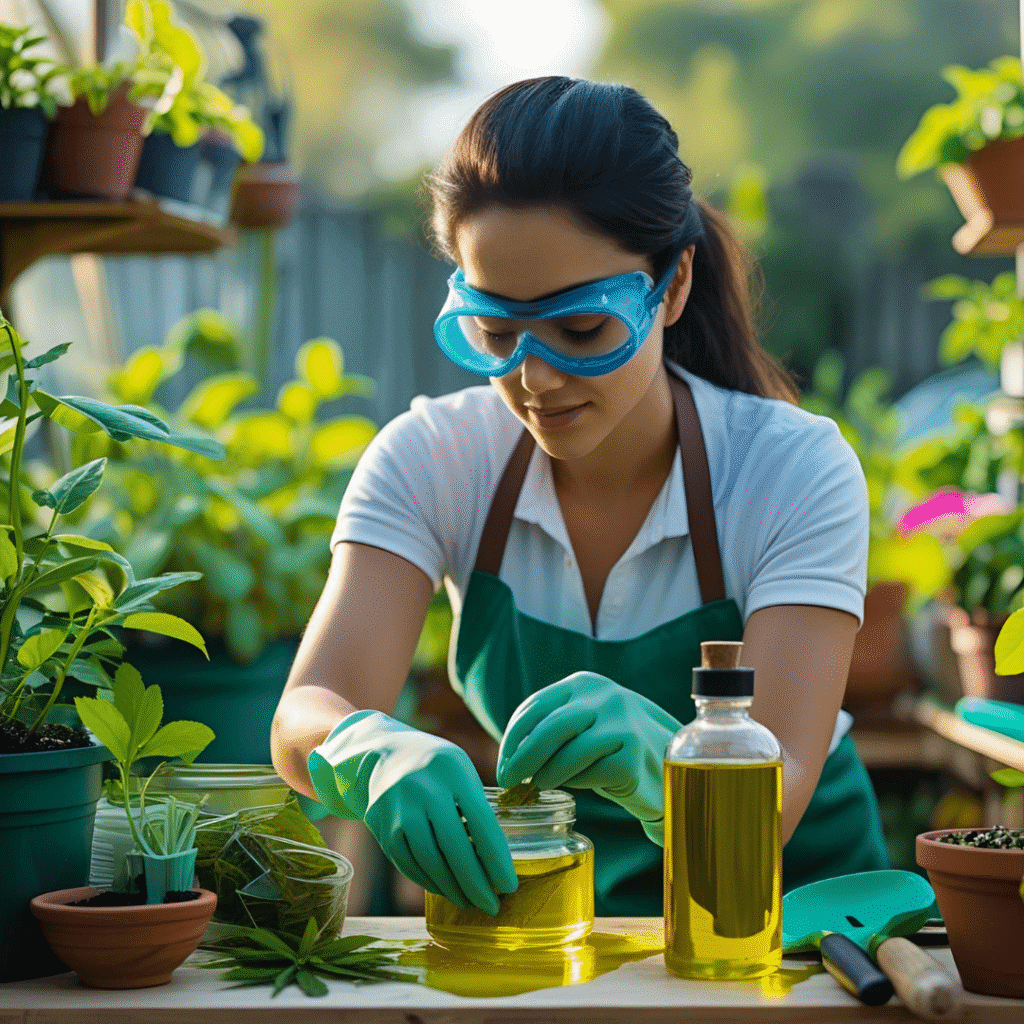
Using Neem Oil Spray in Trees
Trees need love too! I use neem oil for trees differently than for smaller plants. For fruit trees, I focus on the lower branches and trunk area where I can reach safely.
Never spray the entire canopy of a large tree – it’s not practical and can harm beneficial insects unnecessarily. Instead, focus on problem areas and use it preventively on young trees.
For flowering trees, timing is crucial. Avoid spraying during bloom time to protect pollinators. I typically treat trees in late winter or early spring before buds break.
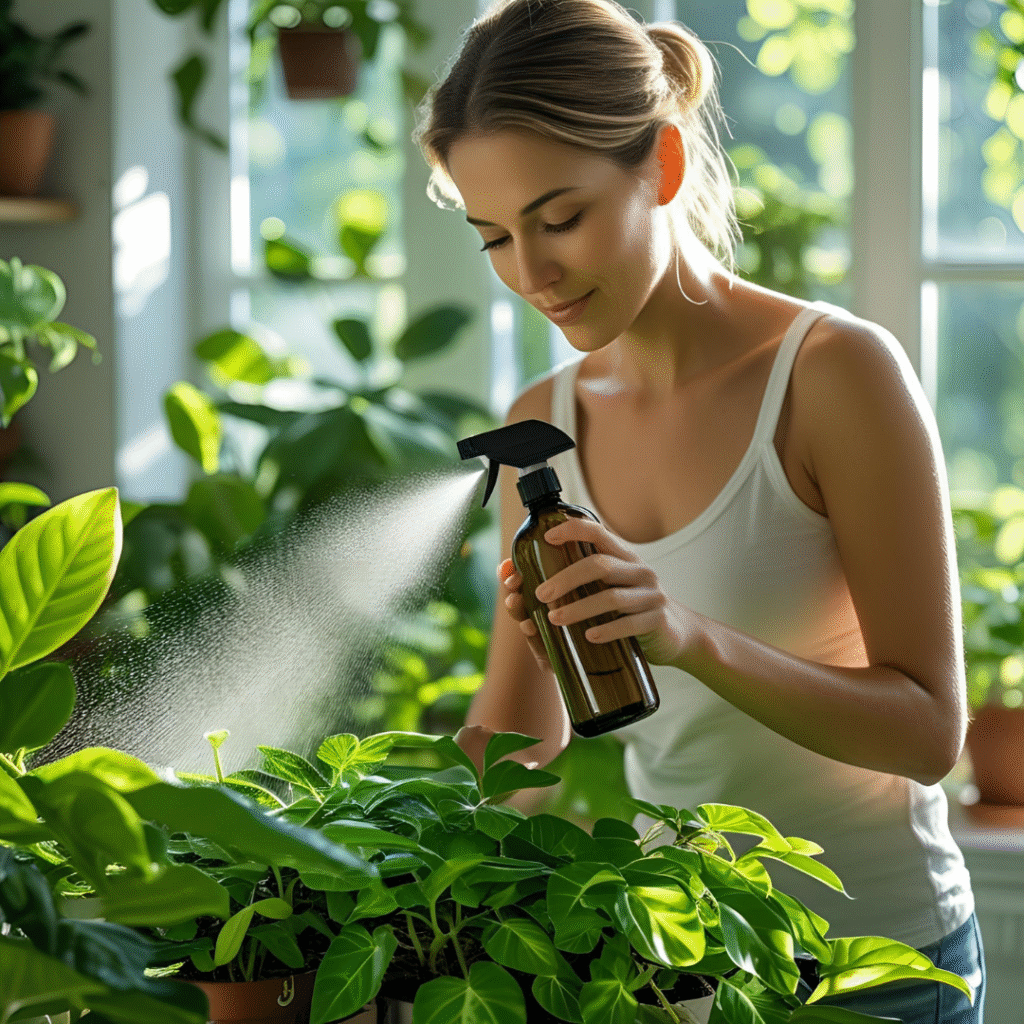
What Pests Does Neem Oil Insecticide Kill?
Insects
Neem oil kills a wide range of soft-bodied insects that love to munch on our precious plants:
Aphids are probably the most common pest I deal with, and neem oil works amazingly well against them. These tiny green or black bugs cluster on new growth and can multiply incredibly fast.
Spider mites create those fine webs on plant leaves and cause stippling damage. Neem oil suffocates them effectively, especially when applied to leaf undersides.
Whiteflies look like tiny white moths and are particularly troublesome on tomatoes and other vegetables. Neem oil disrupts their breeding cycle beautifully.
Thrips cause silver streaks on leaves and can spread plant viruses. Regular neem oil treatments keep populations under control.
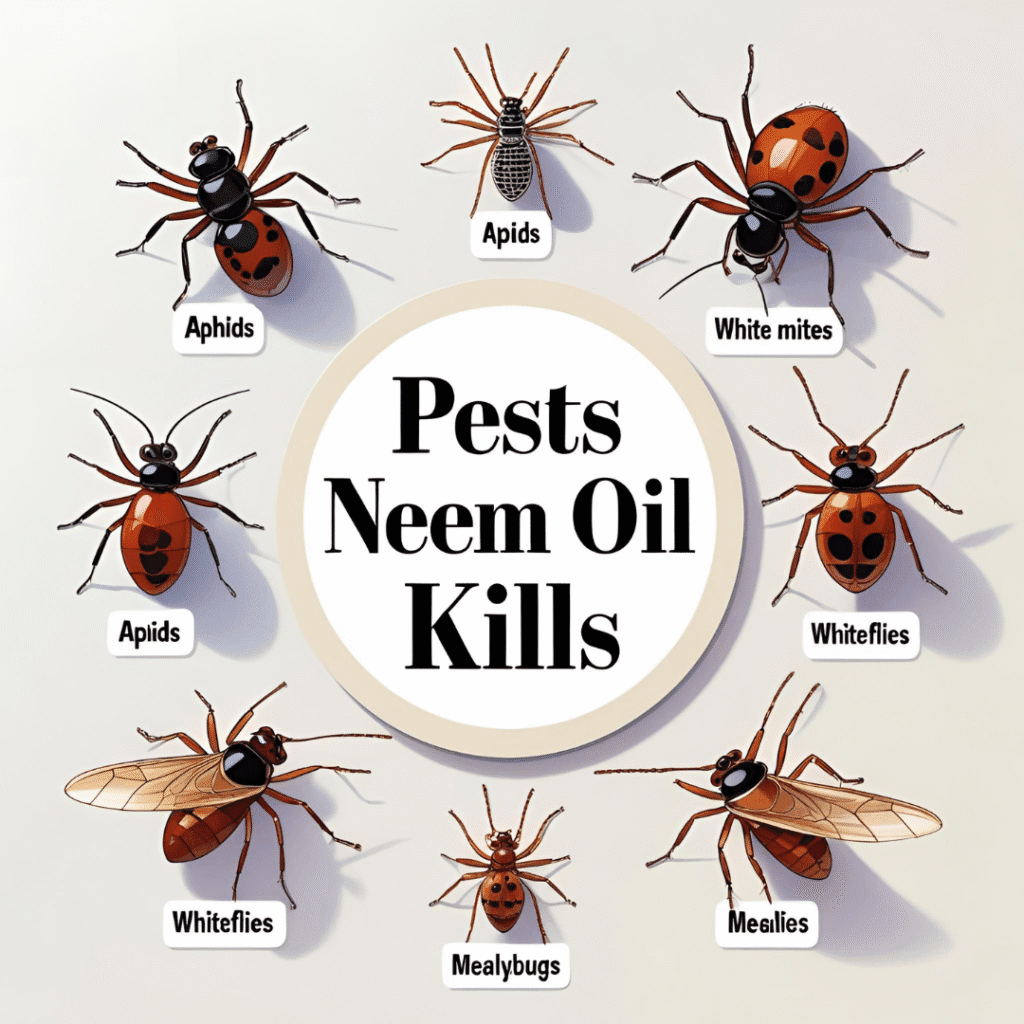
Fungal Diseases
This is where neem oil really shines! It’s not just an insecticide – it’s also a fantastic fungicide.
Powdery mildew creates that white, dusty coating on leaves. I’ve had great success preventing and treating mild cases with regular neem oil applications.
Black spot on roses has been much less problematic since I started my neem oil routine. Prevention is definitely better than trying to cure a severe infection.
Rust diseases cause orange or yellow spots on leaves. Neem oil helps prevent spore germination when used regularly.
Other Pests
Scale insects can be stubborn, but neem oil helps soften their protective coating and disrupts their feeding.
Mealybugs with their cotton-like appearance respond well to neem oil treatments, especially on houseplants.
Even some caterpillars can be deterred by neem oil, though it’s more effective against the smaller, soft-bodied varieties.
Is Neem Oil Pet Safe?
This is such an important question for us pet parents! The good news is that neem oil is generally safe for pets when used properly, but there are still precautions to take.
Keep pets away from freshly sprayed plants until they’re completely dry. While neem oil isn’t toxic like synthetic pesticides, it can cause stomach upset if consumed in large quantities.
I always check with my vet before using any new garden products around my pets, especially if they like to nibble on plants or roll in the garden.
For cats specifically, be extra cautious. They’re more sensitive to essential oils and plant compounds than dogs are. I always err on the side of caution with my feline friends.
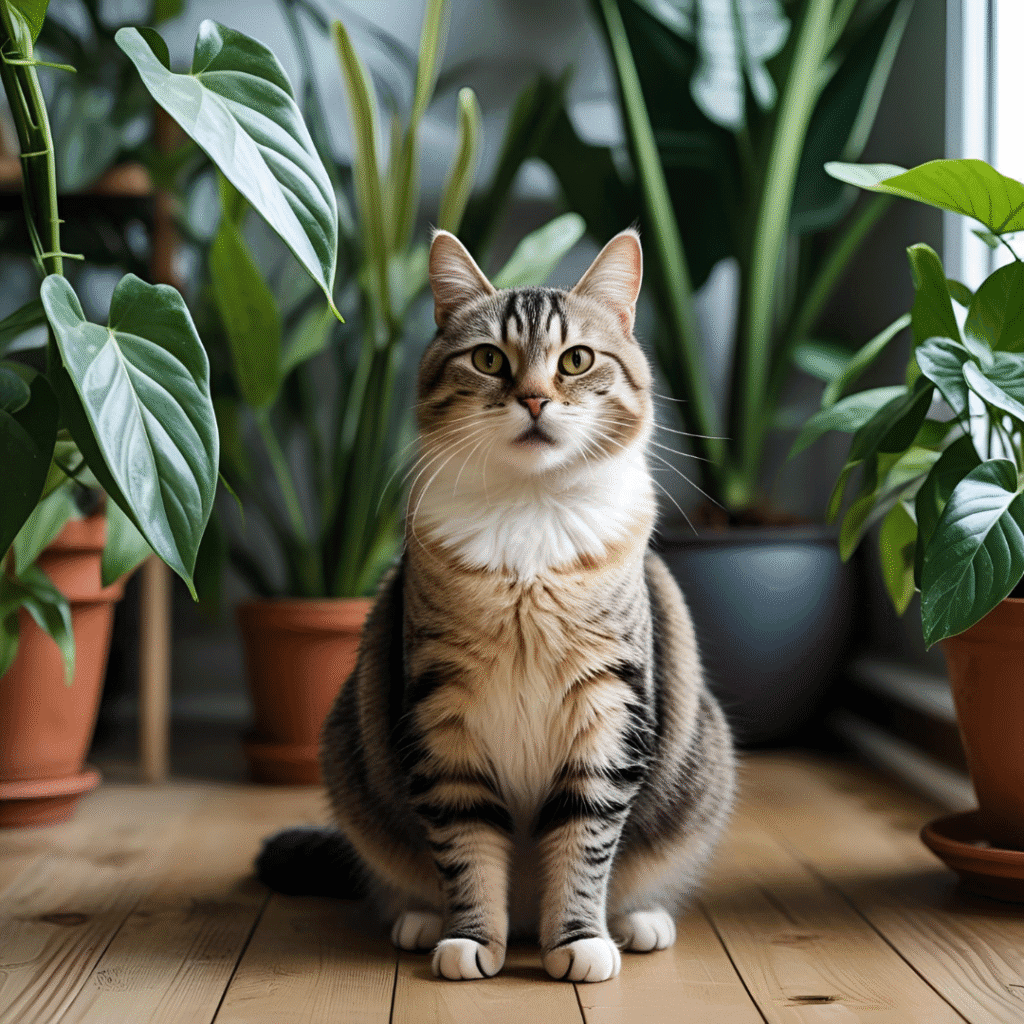
Natural Pest Control and Essential Oil Connections
Speaking of natural solutions, I love combining neem oil with other plant-based treatments! If you’re interested in natural remedies like I am, you might enjoy learning about essential oils blending for other household uses.
Just like how we use essential oils for sinus infections and create essential oil blends for better sleep, neem oil represents another way nature provides solutions for our daily challenges.
I’ve even discovered that some gardeners use peppermint oil for spiders around their garden edges – it’s amazing how many natural options we have!
You can also learn more about natural pest control methods from EPA’s guide to safer pest control for additional eco-friendly options.
Organic Gardening with Neem Oil
Incorporating neem oil into your organic gardening routine feels so aligned with a natural lifestyle! I love that I can grow beautiful, healthy plants without relying on harsh chemicals.
The key to success with organic methods is consistency and patience. Neem oil works best as part of a holistic approach that includes healthy soil, proper plant spacing, and good garden hygiene.
I also rotate between different natural treatments to prevent pest resistance. Sometimes I use insecticidal soap, other times neem oil, and occasionally beneficial predator insects.
Storing and Buying Pure Neem Oil
Quality matters when buying pure neem oil! I always look for cold-pressed, unrefined neem oil from reputable suppliers. It should have that characteristic strong smell – if it’s odorless, it’s probably been heavily processed.
Store your neem oil in a cool, dark place. It can solidify at temperatures below 77°F, which is completely normal. Just warm it gently to return it to liquid form.
Buy in quantities you’ll use within a year or two. While neem oil doesn’t spoil quickly, fresher oil is always more effective.
FAQs About Neem Oil Spray
1. How often should I apply neem oil spray to my plants?
I apply neem oil spray every 2-3 weeks as a preventive measure during the growing season. If I’m treating an active pest problem, I might spray weekly until it’s under control, but I never spray more than once per week to avoid plant stress.
2. Can I use neem oil spray on all types of plants?
Most plants tolerate neem oil well, but some are more sensitive. I always test on a small area first, especially with delicate plants like ferns or young seedlings. Hairy-leafed plants sometimes hold onto the oil longer, so I use a lighter concentration on those.
3. What’s the best time of day to apply neem oil spray?
Early evening is my favorite time! The beneficial insects are less active, and the cooler temperatures prevent leaf burn. Early morning works too, but avoid midday applications when the sun is strongest.
4. How long does neem oil spray take to work?
For soft-bodied insects like aphids, I usually see results within 24-48 hours. For disrupting pest life cycles, it takes longer – sometimes 1-2 weeks to see the full effect. Patience is key with natural treatments!
5. Can I mix neem oil with other garden treatments?
I generally avoid mixing neem oil with other oils or treatments to prevent plant burn. However, I sometimes add a tiny amount of essential oil like rosemary to boost effectiveness. Always test combinations on a small area first.
6. Is homemade neem oil spray as effective as store-bought versions?
In my experience, yes! The key is using pure, high-quality neem oil and mixing it properly. Store-bought versions often contain preservatives and other chemicals I prefer to avoid. Plus, homemade is much more economical.
7. What should I do if my plants show damage after neem oil application?
Stop using neem oil immediately and rinse the affected plants with water. Some yellowing of older leaves is normal, but widespread damage means the concentration was too strong or application conditions weren’t ideal. Always do patch tests first!
8. Can I use neem oil spray on edible plants and vegetables?
Absolutely! That’s one of the things I love most about neem oil. Just wash your harvested vegetables thoroughly before eating, and avoid spraying directly on fruits or vegetables you’ll harvest within a few days.
9. How do I know if my neem oil has gone bad?
Fresh neem oil has a strong, distinctive smell and golden-brown color. If it smells rancid, has changed color dramatically, or has an unusual texture, it’s time to replace it. Good quality neem oil should last 1-2 years when stored properly.
Conclusion
Neem oil spray has completely transformed how I approach garden care, and I hope it does the same for you! This natural, effective solution aligns perfectly with our desire for safer, more sustainable lifestyle choices.
From protecting our precious houseplants to keeping our vegetable gardens thriving, homemade neem oil spray offers us a powerful tool that’s gentle on the environment and safe for our families. The best part? It’s incredibly cost-effective and easy to make at home.
Remember, success with neem oil comes from consistency and proper application. Start with small batches, test on new plants, and be patient with the results. Your plants will thank you with healthier growth and fewer pest problems.
Whether you’re a seasoned gardener or just starting your green journey, adding organic neem oil to your plant care routine is a beautiful step toward more natural living. Here’s to gorgeous, healthy gardens that make our homes even more beautiful!
Keep growing, beautiful gardeners!
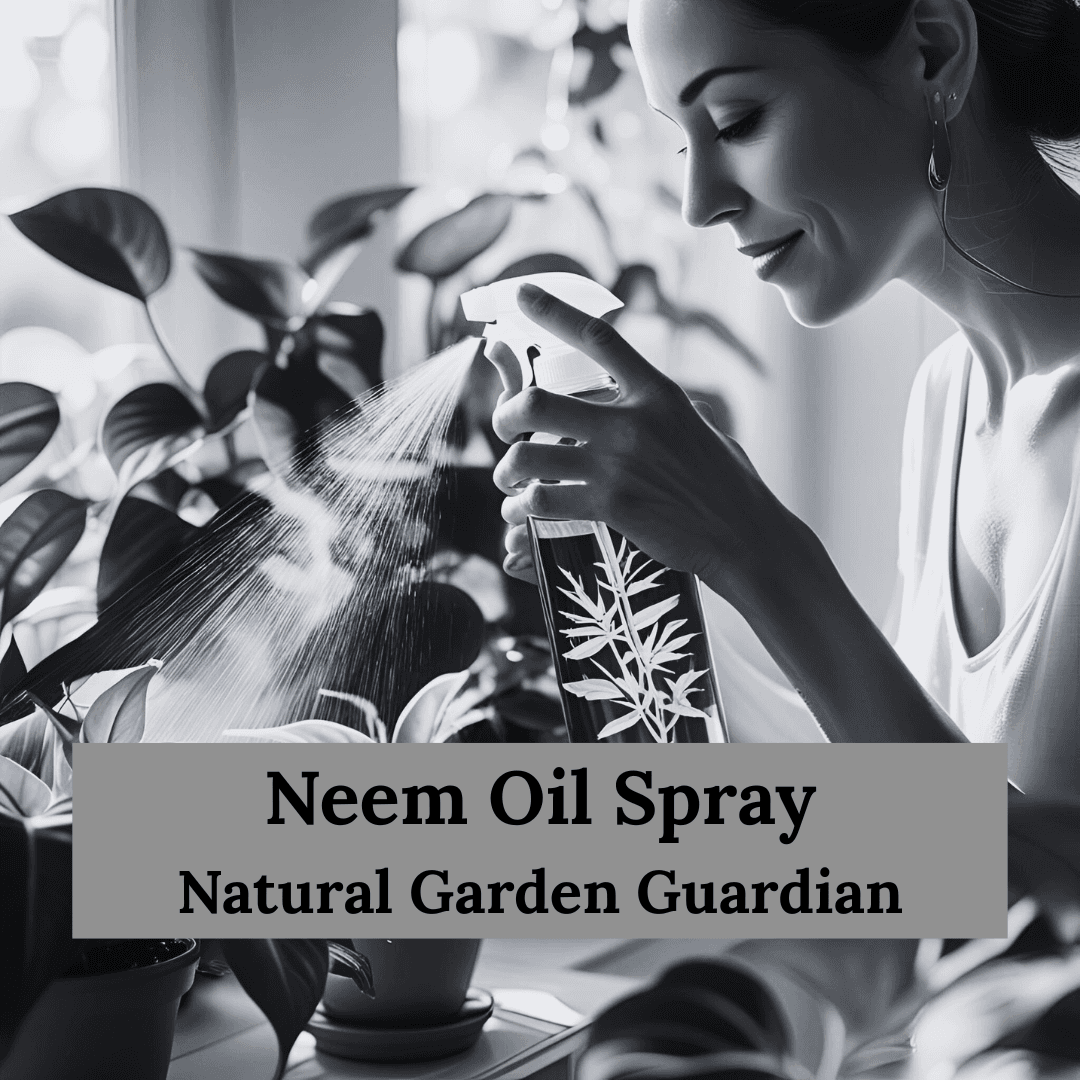

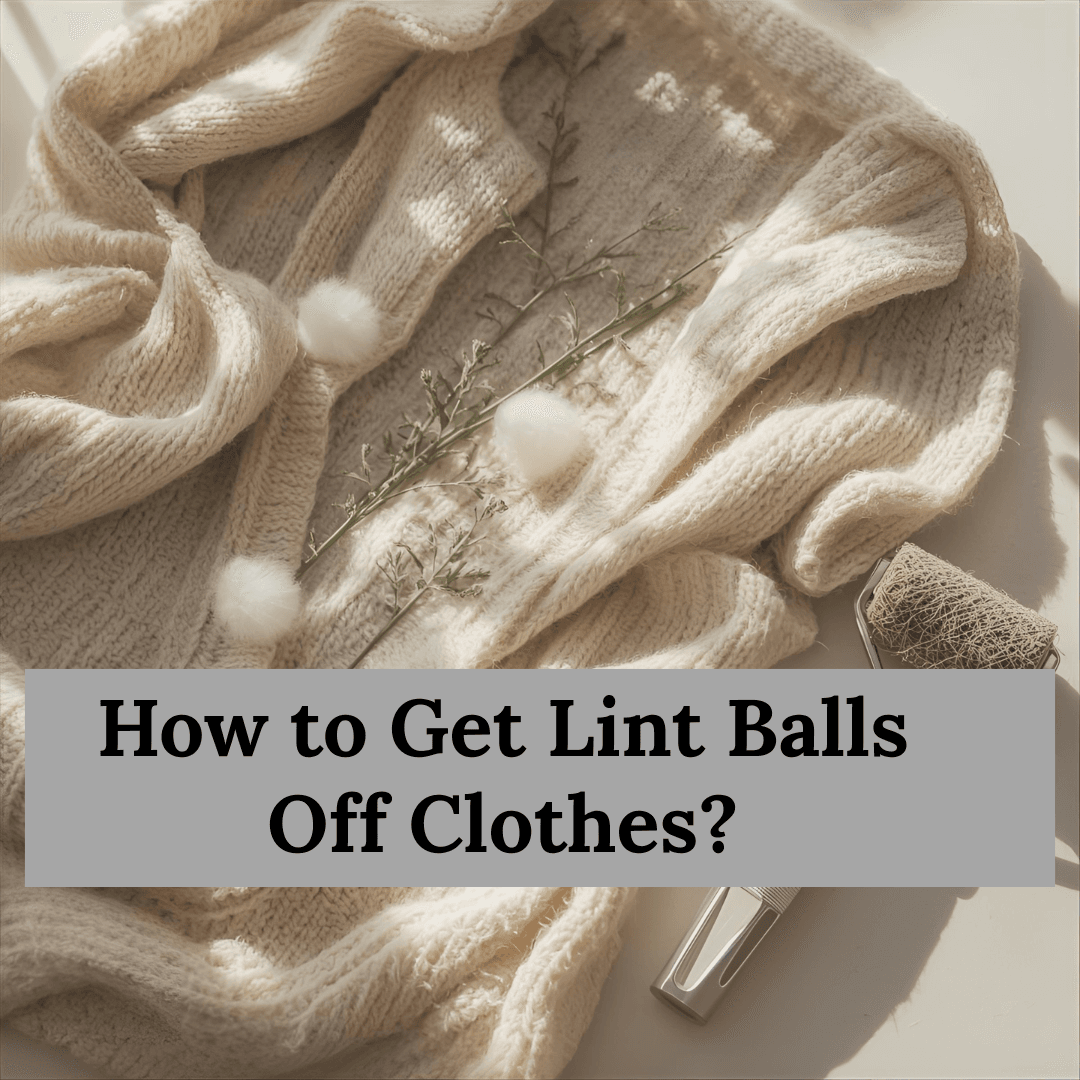





Leave a Reply